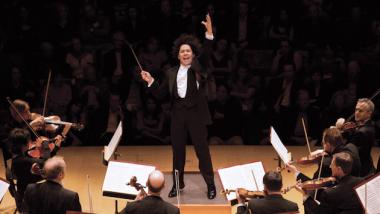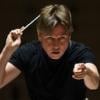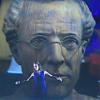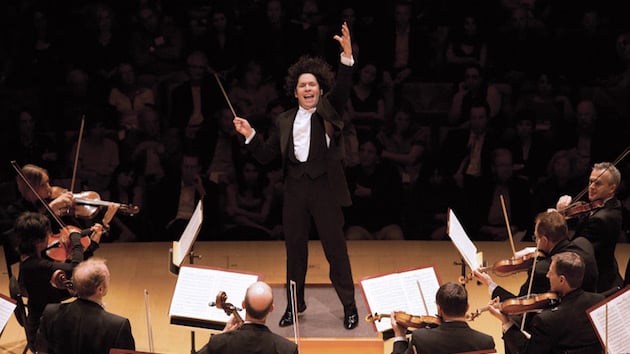
The Los Angeles Philharmonic and conductor Gustavo Dudamel are in final preparations for a Spring tour that will take the orchestra to Boston, Washington D.C., and New York City, then on to London and Paris.
As part of the preparations, Dudamel and the orchestra gave a preview performance Friday of the program that will open the tour in Boston on April 25. It began with the world premiere of Esa-Pekka Salonen’s lighter-than-air, Pollux, followed by an all-hands-on-deck performance of Amériques by Edgard Varèse that rattled the rafters of the Walt Disney Concert Hall, and ended with a sumptuous, emotionally resonant performance of the Symphony No. 5 in D minor, Op 47 by Dmitri Shostakovich.
As described by Salonen, Pollux represents half of his concept. Its counterpart and contrasting twin, Castor, is still in the works.
“During the composition process of Pollux, I encountered a strange problem,” Salonen explains in his program notes. “My material seemed to want to grow in two completely different directions. Finally, I realized that these very different musical identities (I had referred to them as brothers in my sketches) would not fit into one formal, cohesive unit, a single piece. This made me think of the myth of the nonidentical twins Castor and Pollux ... My solution was to write two independent but genetically linked orchestral works.”
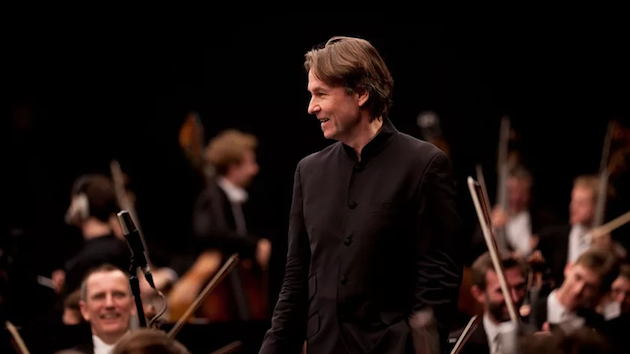
The brother compositions are meant to be related musically but polar opposites emotionally. His Pollux, a child of the Gods, is an impressionistic landscape of floating clouds and star-bright twinkles with nary a hint of dissonance. The more lyric aspects of the orchestration, particularly in Salonen’s use of three flutes, harp, celesta, glockenspiel, and vibraphone creates a Debussyan atmosphere against a terra firma of sonorous strings. The effect is like the reflective colorations of a pond painted by Monet. It is by far the most airy and serene piece in the composer’s repertory. But it’s only half the portrait. It’s the yang without the yin . It’s lightness without darkness, the serenity without the conflict. Until the two parts can be played together, the real impact of Salonen’s concept will remain a mystery. Friday’s performance was a cliffhanger.
There wasn’t a spare inch of unoccupied space on the Disney Hall stage for the performance of Amériques (1929). The vast orchestral forces (among others specified by the composer) included 1 wailing siren, 3 clarinets (plus E-flat and bass clarinets and a heckelphone), 2 contrabassoons, 8 horns, 3 trombones and a bass trombone, 2 harps, and every type of percussion imaginable including a “lion’s roar” (a suspended drum with a pull rope threaded through it). (And, by the way, the original 1926 version was bigger, including four more percussionists playing slapsticks, wind machine, boat whistle, and ratchet.) And it’s all going on tour. Wow.
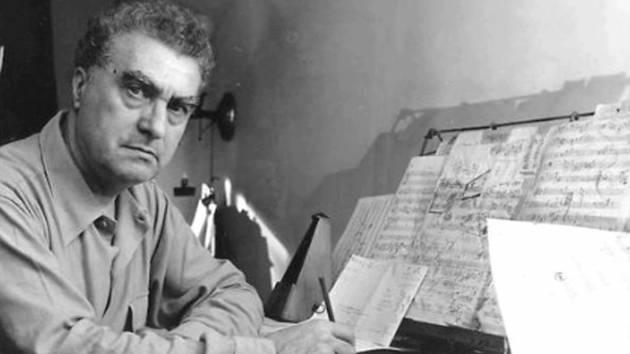
If Stravinsky’s Rite of Spring, whose notorious premiere Varèse attended, represents a musical volcano, Amériques explodes with the power of a tectonic plate shifting. Its forward momentum and volume is unrelenting. It’s a maximalist work where a shift from quadruple forte down to forte represents an island of calm. It was not surprising to see the Philharmonic musicians (especially the wind players whose backs were toward all that brass) popping in earplugs in preparation.
Dudamel attacked the piece like George Patton at the Battle of the Bulge. Horns to the left of him, trombones to the right of him volleyed and thundered. Dudamel attacked the piece like George Patton at the Battle of the Bulge. Horns to the left of him, trombones to the right of him volleyed and thundered. But it was anything but chaotic. There was immense control, there was modulation, there was synchronization. And when the final crescendo drew to its titanic climax, it was quite possibly the loudest music ever to shake the hall. I cannot recall ever seeing Gustavo Dudamel more exhausted after conducting a single piece of music. Get ready Boston — the Angelinos are coming!
The forces were only slightly reduced for the performance of the Shostakovich symphony, but the temperament was entirely different. Dudamel’s approach to the balance of melody and orchestral texture of the first movement might easily have been mistaken for a Dudamel performance of Brahms or Tchaikovsky. It was velveteen, an unfolding tapestry of sound.
The Mahler-influenced Allegretto swirled by as a somewhat drunken romp, leading to the emotional core of the symphony, the long, shadow filled Largo. Here Dudamel and the orchestra infused the performance with a deeply felt sense of conflicted emotions. Was it meant to depict the composer’s dark night of the soul following the attack by Joseph Stalin? It felt like it.
When the three-part final movement came, Dudamel pushed the presto section at light speed with the brass blazing and the strings pulsing at a tempo that seemed superhuman. The final declamatory section, either an act of political patriotism of a compositional put-on of jingoistic mockery, drew forth sound from the orchestra not unlike what we had heard in Amériques. Even more of a good thing.

